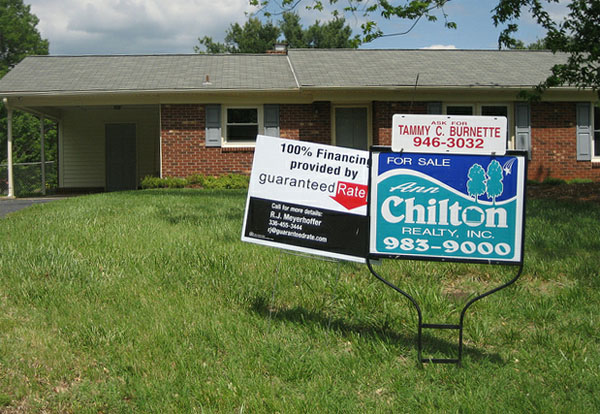Economy Watch: Home Foreclosures on the Rise, but Shadow Inventory Falling; Jobless Claims Up
While U.S. home foreclosures spiked 9 percent in May - but were still down 4 percent from the year-over-year figure - housing shadow inventory fell to 1.5 million units. Jobless claims rose by 6,000 for the week ending June 9.
By Dees Stribling, Contributing Editor
RealtyTrac reported on Thursday that U.S. foreclosure filings spiked 9 percent in May compared with April, by which the company means an aggregation of properties vexed by default notices, scheduled auctions or bank repossessions. Yet foreclosures still aren’t occurring at the same rate as a year ago. Year-over-year, the rate in May 2012 was down 4 percent compared with May 2011.
“U.S. foreclosure activity has now decreased on a year-over-year basis for 20 straight months including May, but the jump in May foreclosure starts shows that it’s going to be a bumpy ride down to the bottom of this foreclosure cycle, RealtyTrac CEO Brandon Moore noted in a statement. “Based on the rise in pre-foreclosure sales we’ve seen so far this year, a higher percentage of these new foreclosure starts will likely end up as short sales or auction sales to third parties rather than bank repossessions going forward.”
Judicial states combined posted a 26 percent year-over-year increase in overall foreclosure activity, while non-judicial states combined posted a 20 percent year-over-year decrease in foreclosure activity. Georgia leapfrogged past Arizona, Florida, California and Nevada — the usual suspects among high-foreclosure states — to post the nation’s highest state foreclosure rate in May, the first time since Feb. 2006 that Georgia’s foreclosure rate has ranked highest among the states.
Housing Shadow Inventory Falling
CoreLogic reported on Thursday that residential shadow inventory as of April 2012 fell to 1.5 million units, representing a supply of four months. This was a 14.8 percent drop from April 2011, when shadow inventory stood at 1.8 million units, or a six-month supply, according to the company. By CoreLogic’s reckoning, shadow inventory is the number of dwellings that are seriously delinquent (90-plus days missing payments) in the foreclosure process, and already REO, but not on the market yet.
Of the 1.5 million properties currently in the shadow inventory, 720,000 units are seriously delinquent, 410,000 are in some stage of foreclosure, and 390,000 are already in REO, according to CoreLogic. Since peaking at 2.1 million units in January 2010, the shadow inventory has fallen by 28 percent.
“The decline in the shadow inventory is a positive development because it removes some of the downward pressure on house prices,” noted Mark Fleming, chief economist for CoreLogic, in a statement. “This is one of the reasons why some markets that were formerly identified as deeply distressed, like Arizona, California and Nevada, are now experiencing price increases.
Jobless Claims Up, Inflation Down
Initial jobless claims edged up for the week ending June 9, according to the U.S. Department of Labor on Thursday, with initial claims for the week at 386,000, an increase of 6,000 from the previous week’s revised figure of 380,000. The less-volatile four-week moving average was 382,000, an increase of 3,500 from the previous week’s revised average of 378,500.
Separately, the Bureau of Labor Statistics noted on Thursday that the U.S. Consumer Price Index decreased 0.3 percent in May. The CPI’s recent monthly declines have brought the annual inflation rate down as well: in the last 12 months, according to the BLS, consumer prices have risen only 1.7 percent. May’s decline had the bonus effect of contributing to a rise in real earnings for U.S. workers of 0.3 percent for the month, the BLS also said.
The dropping price of gas inspired most of the month-over-month drop in the CPI, with the gasoline index declining 6.8 percent in May. The indexes for natural gas and fuel oil declined as well, though the electricity index increased and the food index was unchanged. Take energy and food out of the CPI and everything else was up 0.2 percent for the month.
Wall Street’s back in a bouncy mood this week. Thursday was an up day, with the Dow Jones Industrial Average gaining 155.53 points, or 1.24 percent, on the belief that the Fed would pump things up if need be. The S&P 500 advanced 1.08 percent and the Nasdaq was positive to the tune of 0.63 percent.








You must be logged in to post a comment.